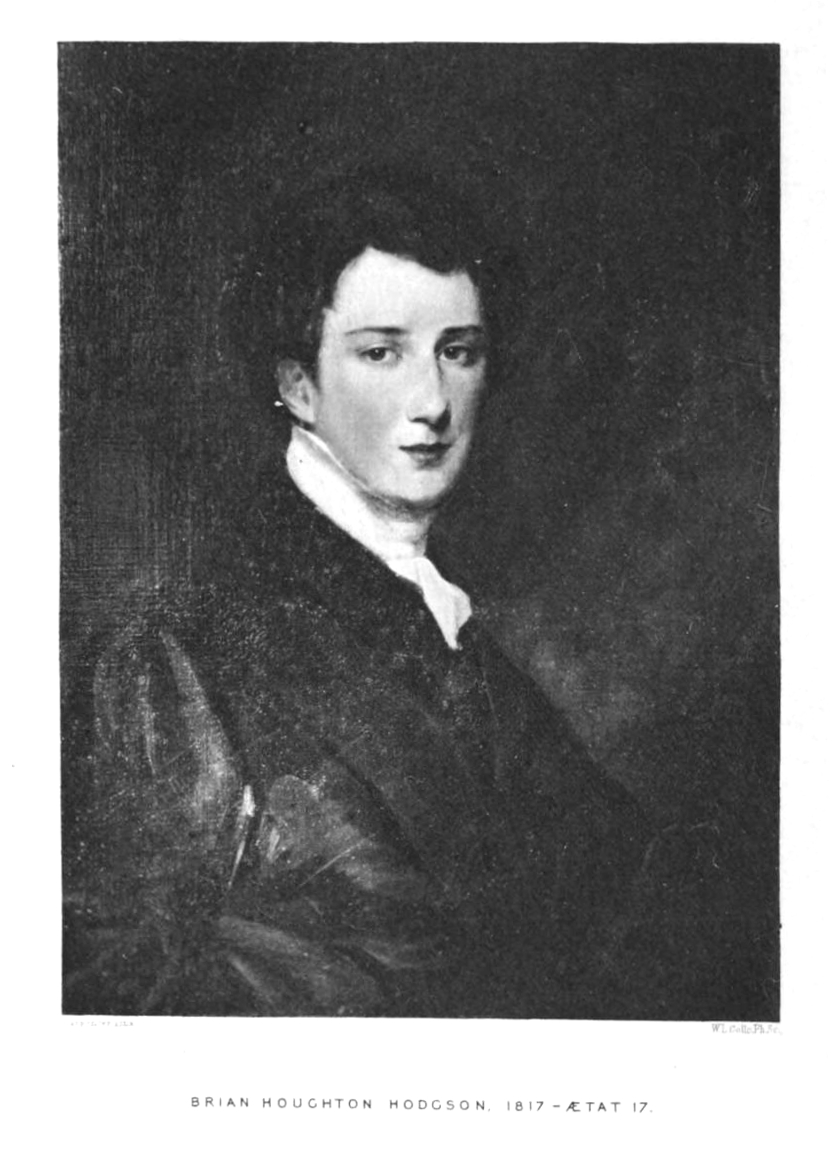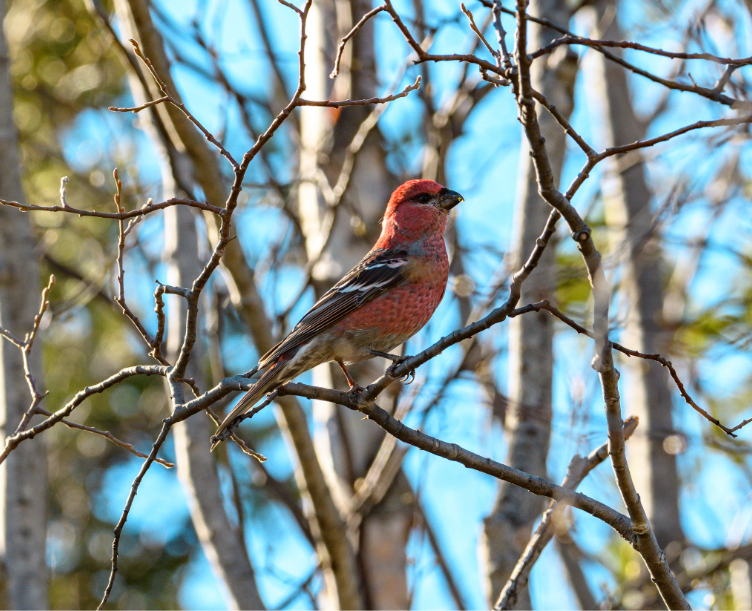|
Crimson-browed Finch
The crimson-browed finch (''Carpodacus subhimachalus'') is a true finch species (family (biology), family Fringillidae). It is found in Bhutan, China, India, Myanmar, and Nepal. Its natural habitats are temperate forests and temperate shrubland. This is a large finch with a large short bill. The male has a crimson red head and throat. The female has a yellow head and throat. The species was described by the British naturalist Brian Houghton Hodgson in 1836 under the binomial name ''Corythus subhimachalus''. The species name ''subhimachalus'' combines the Latin ''sub'' meaning 'beneath' and the Hindi language, Hindi word ''himachal'' meaning snow. The crimson-browed finch was formerly placed in the genus ''Pinicola'' but was moved to the rosefinch genus ''Carpodacus'' based on the results from the phylogenetic analyses of mitochondrial and nuclear DNA sequences. References Pinicola, crimson-browed finch Birds of Nepal Birds of Bhutan Birds of Tibet Birds of Central China ... [...More Info...] [...Related Items...] OR: [Wikipedia] [Google] [Baidu] |
Brian Houghton Hodgson
Brian Houghton Hodgson (1 February 1801 – 23 May 1894) was a pioneer natural history, naturalist and ethnologist working in India and Nepal where he was a British Resident (title), Resident. He described numerous species of birds and mammals from the Himalayas, and several birds were named after him by others such as Edward Blyth. He was a scholar of Newar Buddhism and wrote extensively on a range of topics relating to linguistics and religion. He was an opponent of the British proposal to introduce English as the official medium of instruction in Indian schools. Early life Hodgson was the second of seven children of Brian Hodgson (1766–1858) and his wife Catherine (1776–1851), and was born at Lower Beech, Prestbury, Cheshire. His father lost money in a bad bank investment and had to sell their home at Lower Beech. A great-aunt married to Beilby Porteus, the Bishop of London, helped them but the financial difficulties were great. Hodgson's father worked as a warden of the M ... [...More Info...] [...Related Items...] OR: [Wikipedia] [Google] [Baidu] |
Birds Described In 1836
Birds are a group of warm-blooded vertebrates constituting the class Aves (), characterised by feathers, toothless beaked jaws, the laying of hard-shelled eggs, a high metabolic rate, a four-chambered heart, and a strong yet lightweight skeleton. Birds live worldwide and range in size from the bee hummingbird to the common ostrich. There are over 11,000 living species and they are split into 44 orders. More than half are passerine or "perching" birds. Birds have wings whose development varies according to species; the only known groups without wings are the extinct moa and elephant birds. Wings, which are modified forelimbs, gave birds the ability to fly, although further evolution has led to the loss of flight in some birds, including ratites, penguins, and diverse endemic island species. The digestive and respiratory systems of birds are also uniquely adapted for flight. Some bird species of aquatic environments, particularly seabirds and some waterbirds, have furt ... [...More Info...] [...Related Items...] OR: [Wikipedia] [Google] [Baidu] |
Birds Of Tibet
Birds are a group of warm-blooded vertebrates constituting the class (biology), class Aves (), characterised by feathers, toothless beaked jaws, the Oviparity, laying of Eggshell, hard-shelled eggs, a high Metabolism, metabolic rate, a four-chambered heart, and a strong yet lightweight Bird skeleton, skeleton. Birds live worldwide and range in size from the bee hummingbird to the common ostrich. There are over 11,000 living species and they are split into 44 Order (biology), orders. More than half are passerine or "perching" birds. Birds have Bird wing, wings whose development varies according to species; the only known groups without wings are the extinct moa and elephant birds. Wings, which are modified forelimbs, gave birds the ability to fly, although further evolution has led to the Flightless bird, loss of flight in some birds, including ratites, penguins, and diverse endemism, endemic island species. The digestive and respiratory systems of birds are also uniquely a ... [...More Info...] [...Related Items...] OR: [Wikipedia] [Google] [Baidu] |
Birds Of Bhutan
Birds are a group of warm-blooded vertebrates constituting the class Aves (), characterised by feathers, toothless beaked jaws, the laying of hard-shelled eggs, a high metabolic rate, a four-chambered heart, and a strong yet lightweight skeleton. Birds live worldwide and range in size from the bee hummingbird to the common ostrich. There are over 11,000 living species and they are split into 44 orders. More than half are passerine or "perching" birds. Birds have wings whose development varies according to species; the only known groups without wings are the extinct moa and elephant birds. Wings, which are modified forelimbs, gave birds the ability to fly, although further evolution has led to the loss of flight in some birds, including ratites, penguins, and diverse endemic island species. The digestive and respiratory systems of birds are also uniquely adapted for flight. Some bird species of aquatic environments, particularly seabirds and some waterbirds, have fur ... [...More Info...] [...Related Items...] OR: [Wikipedia] [Google] [Baidu] |
Birds Of Nepal
Birds are a group of warm-blooded vertebrates constituting the class Aves (), characterised by feathers, toothless beaked jaws, the laying of hard-shelled eggs, a high metabolic rate, a four-chambered heart, and a strong yet lightweight skeleton. Birds live worldwide and range in size from the bee hummingbird to the common ostrich. There are over 11,000 living species and they are split into 44 orders. More than half are passerine or "perching" birds. Birds have wings whose development varies according to species; the only known groups without wings are the extinct moa and elephant birds. Wings, which are modified forelimbs, gave birds the ability to fly, although further evolution has led to the loss of flight in some birds, including ratites, penguins, and diverse endemic island species. The digestive and respiratory systems of birds are also uniquely adapted for flight. Some bird species of aquatic environments, particularly seabirds and some waterbir ... [...More Info...] [...Related Items...] OR: [Wikipedia] [Google] [Baidu] |
Mitochondrial
A mitochondrion () is an organelle found in the cells of most eukaryotes, such as animals, plants and fungi. Mitochondria have a double membrane structure and use aerobic respiration to generate adenosine triphosphate (ATP), which is used throughout the cell as a source of chemical energy. They were discovered by Albert von Kölliker in 1857 in the voluntary muscles of insects. The term ''mitochondrion'', meaning a thread-like granule, was coined by Carl Benda in 1898. The mitochondrion is popularly nicknamed the "powerhouse of the cell", a phrase popularized by Philip Siekevitz in a 1957 ''Scientific American'' article of the same name. Some cells in some multicellular organisms lack mitochondria (for example, mature mammalian red blood cells). The multicellular animal '' Henneguya salminicola'' is known to have retained mitochondrion-related organelles despite a complete loss of their mitochondrial genome. A large number of unicellular organisms, such as microsporidia ... [...More Info...] [...Related Items...] OR: [Wikipedia] [Google] [Baidu] |
Carpodacus
The rosefinches are a genus, ''Carpodacus'', of passerine birds in the finch family Fringillidae. Most are called "rosefinches" and as the word implies, have various shades of red in their plumage. The common rosefinch is frequently called the "rosefinch". The genus name is from the Ancient Greek terms ''karpos'', "fruit", and ''dakno'', "to bite". The ''Carpodacus'' rosefinches occur throughout Eurasia, but the greatest diversity is found in the Sino-Himalayas suggesting that the species originated in this region. Taxonomy The genus ''Carpodacus'' was introduced in 1829 by the German naturalist Johann Jakob Kaup. The type species was designated by George Robert Gray, George Gray in 1842 as ''Fringilla rosea'' Peter Simon Pallas, Pallas, 1776, Pallas's rosefinch. The genus name combines the Ancient Greek '' karpos'' meaning "fruit" with ''dakos'' meaning "biter". In 2012, Zuccon and colleagues published a comprehensive molecular phylogenetic analysis of the finch family. Based ... [...More Info...] [...Related Items...] OR: [Wikipedia] [Google] [Baidu] |
Pinicola
The pine grosbeak (''Pinicola enucleator'') is a large member of the true finch family, Fringillidae. It is the only species in the genus ''Pinicola''. It is found in coniferous woods across Alaska, the western mountains of the United States, Canada, and in subarctic Fennoscandia and across the Palearctic to Siberia. The species is a frugivore, especially in winter, favoring small fruits, such as rowans (mountain-ashes in the New World). With fruit-crop abundance varying from year to year, pine grosbeak is one of many subarctic-resident bird species that exhibit irruptive behavior. In irruption years, individuals can move long distances in search of suitable food supplies, bringing them farther south and/or downslope than is typical of years with large fruit crops. Taxonomy The pine grosbeak was formally described in 1758 by the Swedish naturalist Carl Linnaeus in the tenth edition of his ''Systema Naturae'' under the binomial name ''Loxia enucleator''. The type locality is Swed ... [...More Info...] [...Related Items...] OR: [Wikipedia] [Google] [Baidu] |
Hindi Language
Modern Standard Hindi (, ), commonly referred to as Hindi, is the standardised variety of the Hindustani language written in the Devanagari script. It is an official language of the Government of India, alongside English, and is the ''lingua franca'' of North India. Hindi is considered a Sanskritised register of Hindustani. Hindustani itself developed from Old Hindi and was spoken in Delhi and neighbouring areas. It incorporated a significant number of Persian loanwords. Hindi is an official language in twelve states (Bihar, Gujarat , Mizoram , Maharashtra , Chhattisgarh, Haryana, Himachal Pradesh, Jharkhand, Madhya Pradesh, Rajasthan, Uttar Pradesh, Uttarakhand), and six union territories (Andaman and Nicobar Islands, Delhi, Chandigarh, Dadra and Nagar Haveli and Daman and Diu , Ladakh and Jammu and Kashmir) and an additional official language in the state of West Bengal. Hindi is also one of the 22 scheduled languages of the Republic of India. Hindi i ... [...More Info...] [...Related Items...] OR: [Wikipedia] [Google] [Baidu] |
Binomial Name
In taxonomy, binomial nomenclature ("two-term naming system"), also called binary nomenclature, is a formal system of naming species of living things by giving each a name composed of two parts, both of which use Latin grammatical forms, although they can be based on words from other languages. Such a name is called a binomial name (often shortened to just "binomial"), a binomen, name, or a scientific name; more informally, it is also called a Latin name. In the International Code of Zoological Nomenclature (ICZN), the system is also called nomenclature, with an "n" before the "al" in "binominal", which is a typographic error, meaning "two-name naming system". The first part of the name – the '' generic name'' – identifies the genus to which the species belongs, whereas the second part – the specific name or specific epithet – distinguishes the species within the genus. For example, modern humans belong to the genus ''Homo'' and within this genus to the species ''Hom ... [...More Info...] [...Related Items...] OR: [Wikipedia] [Google] [Baidu] |









